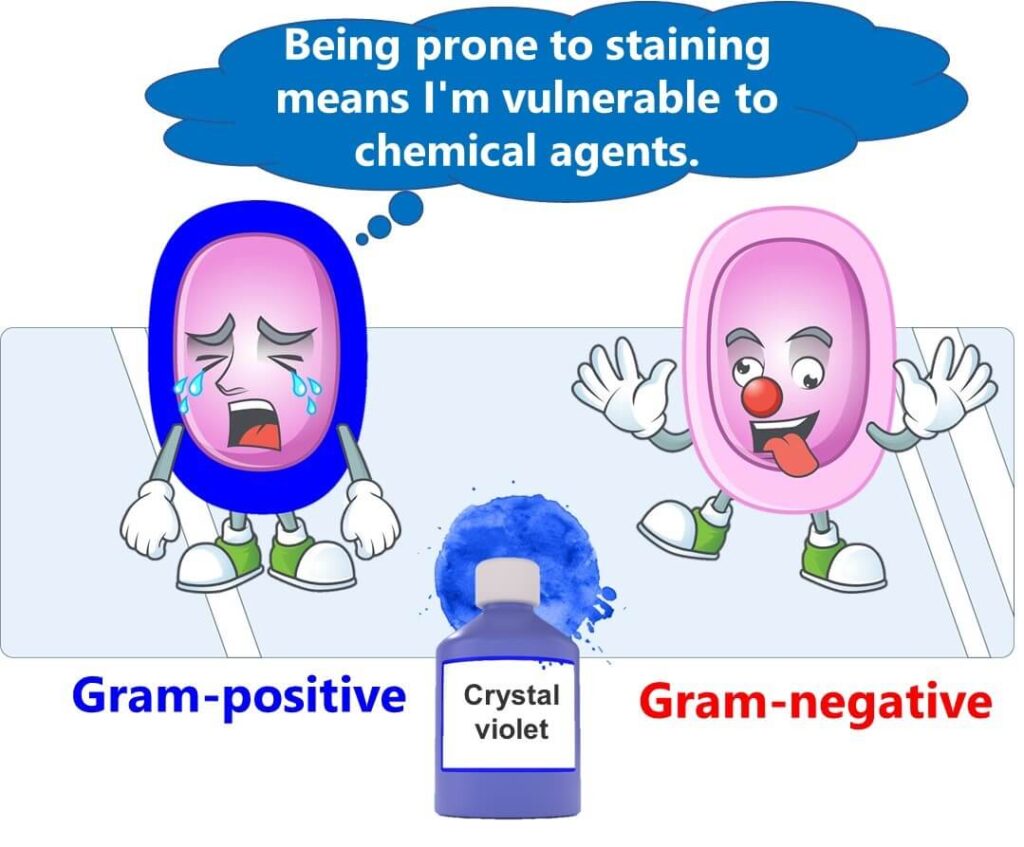The ability of bacteria to resist chemical substances is intricately tied to their cell surface structures. This page explores how the structural differences between Gram-positive and Gram-negative bacteria impact their resistance to chemical agents, providing crucial insights for understanding bacterial behavior in various environments, including food safety and microbiology applications.
The structural differences in cell surfaces between Gram-positive and Gram-negative bacteria have a direct impact on their resistance to chemical substances. In general, Gram-positive bacteria are more susceptible to chemical agents, while Gram-negative bacteria exhibit a higher level of resistance. This resistance in Gram-negative bacteria is primarily due to the presence of lipopolysaccharides (LPS) in their outer membrane, which acts as a robust chemical barrier. In contrast, the thick yet porous cell walls of Gram-positive bacteria offer less protection against chemical substances.
To illustrate, imagine the cell wall of Gram-positive bacteria as a solid steel frame without concrete—an unfinished structure that allows good ventilation. Conversely, Gram-negative bacteria can be compared to a thin but durable trench coat (outer membrane) with a waterproof lining, providing enhanced chemical resistance despite their physical fragility.

Gram-Positive Bacteria's Susceptibility
Due to their structural limitations, Gram-positive bacteria are more easily inhibited by antimicrobial agents. This characteristic is leveraged in the formulation of selective culture media, which target Gram-positive bacteria while allowing the growth of Gram-negative bacteria, such as Escherichia coli and Salmonella. These media exploit the relative vulnerability of Gram-positive bacteria to specific drugs.
Gram-Negative Bacteria's Chemical Defense Mechanisms
The outer membrane of Gram-negative bacteria is a vital protective layer. While the cell membrane underneath is a phospholipid bilayer, the outer surface of the outer membrane is enriched with polysaccharide chains that impart hydrophilic properties. This outer layer, known as lipopolysaccharide (LPS), effectively repels hydrophobic chemical agents, enhancing bacterial resistance.

In Gram staining, the reduced uptake of crystal violet by Gram-negative bacteria illustrates their resistance to chemical substances. This is due to the outer membrane's ability to block the penetration of crystal violet, a chemical compound with hydrophobic functional groups. Thus, Gram-negative bacteria appear less stained compared to Gram-positive bacteria in this process.

Summary
The distinction between Gram-positive and Gram-negative bacteria is crucial for understanding their resistance to chemical agents. Gram-positive bacteria possess a thick but porous cell wall that offers limited protection, whereas Gram-negative bacteria, with their chemically resistant outer membrane, are well-equipped to withstand many chemical challenges. Recognizing these differences is essential for applications in food microbiology, healthcare, and biotechnology, where bacterial resistance plays a significant role.
🏠Master Page: Gram Staining and Microbial Properties: A Comprehensive Overview

